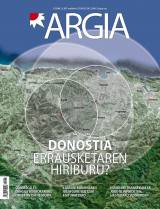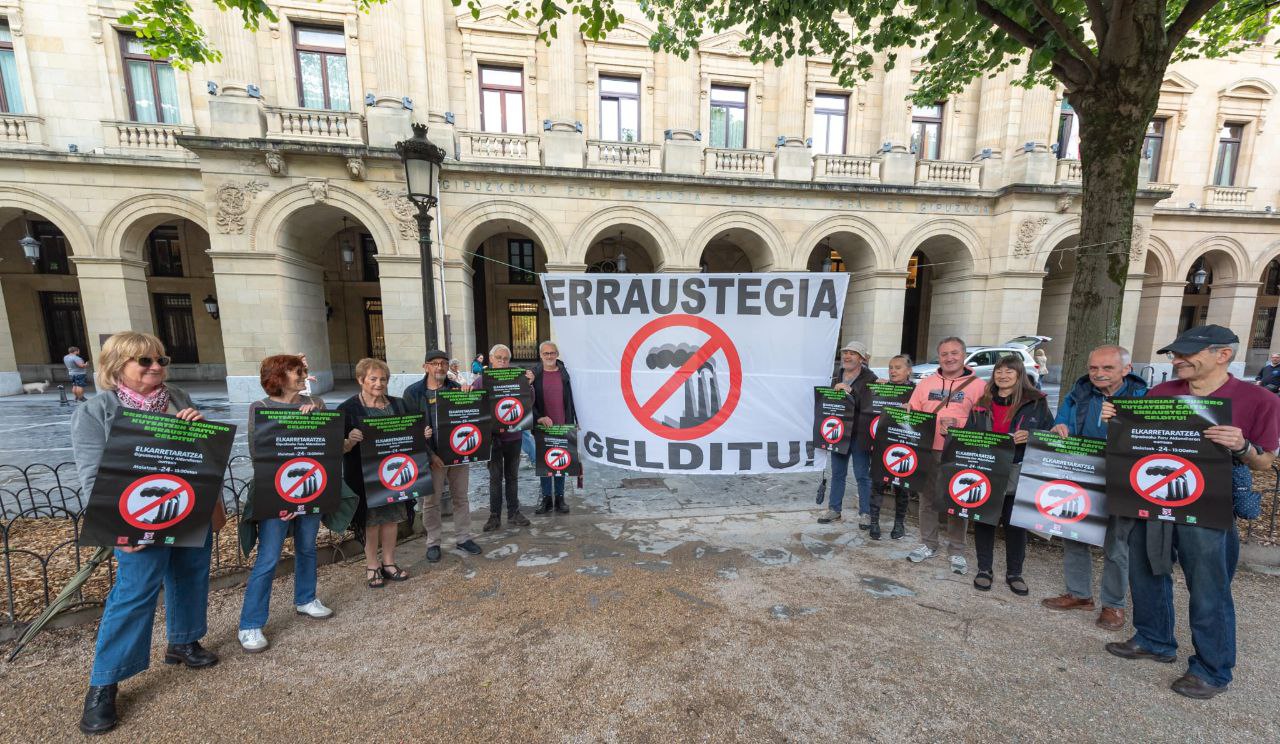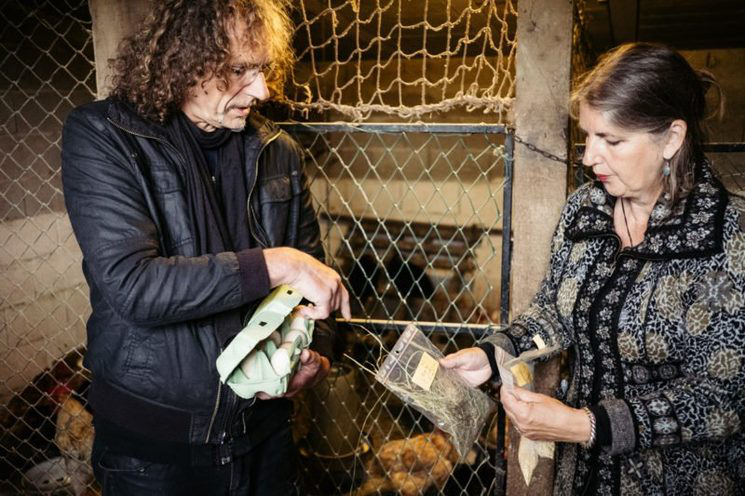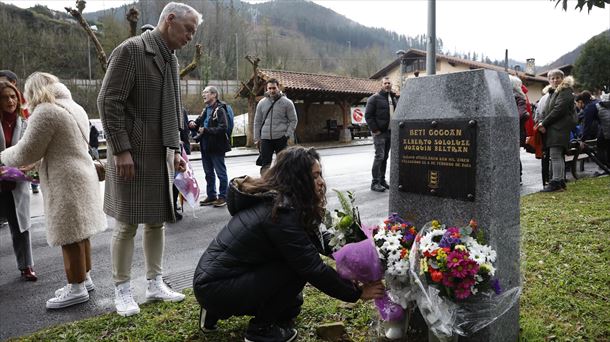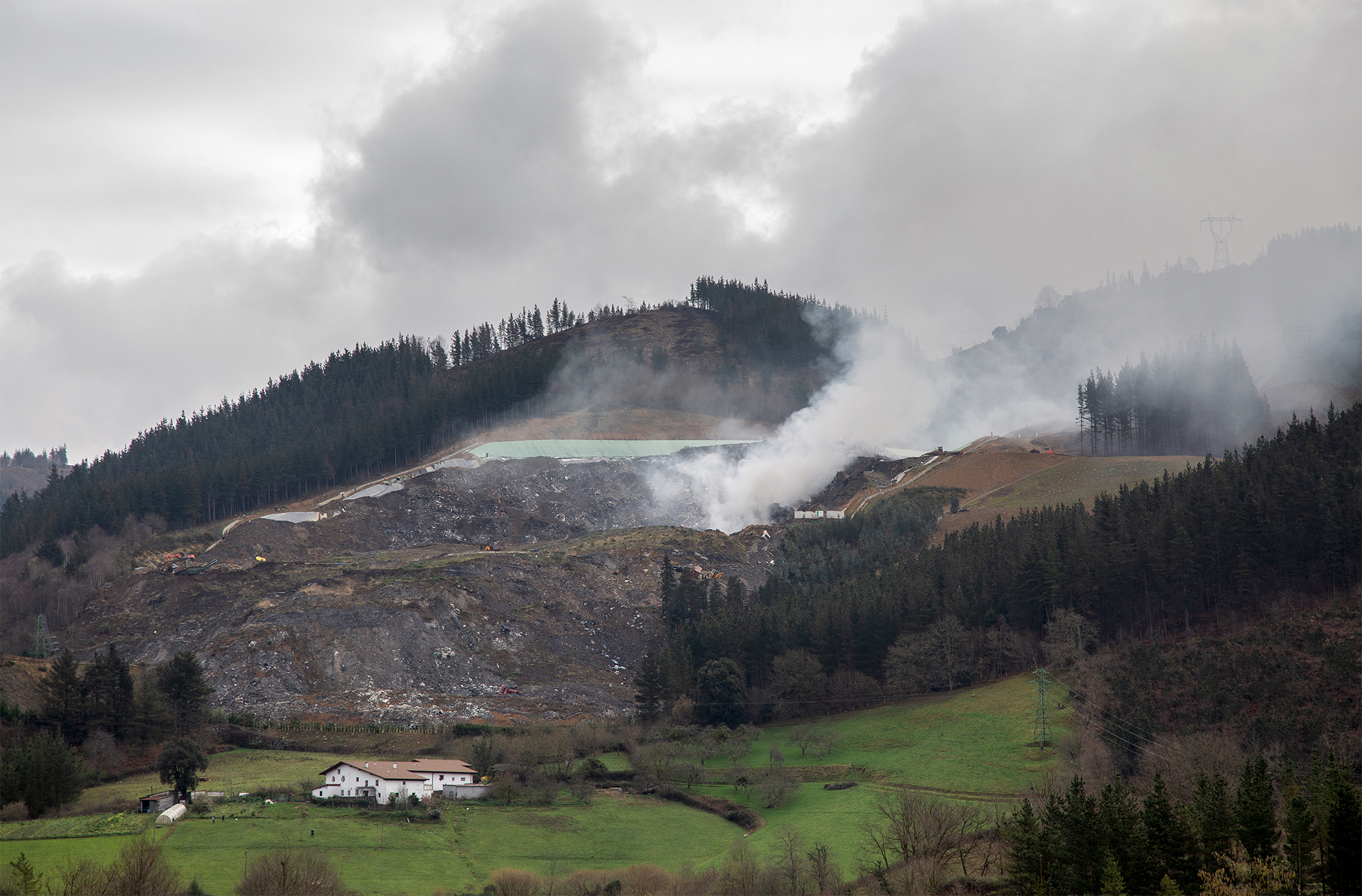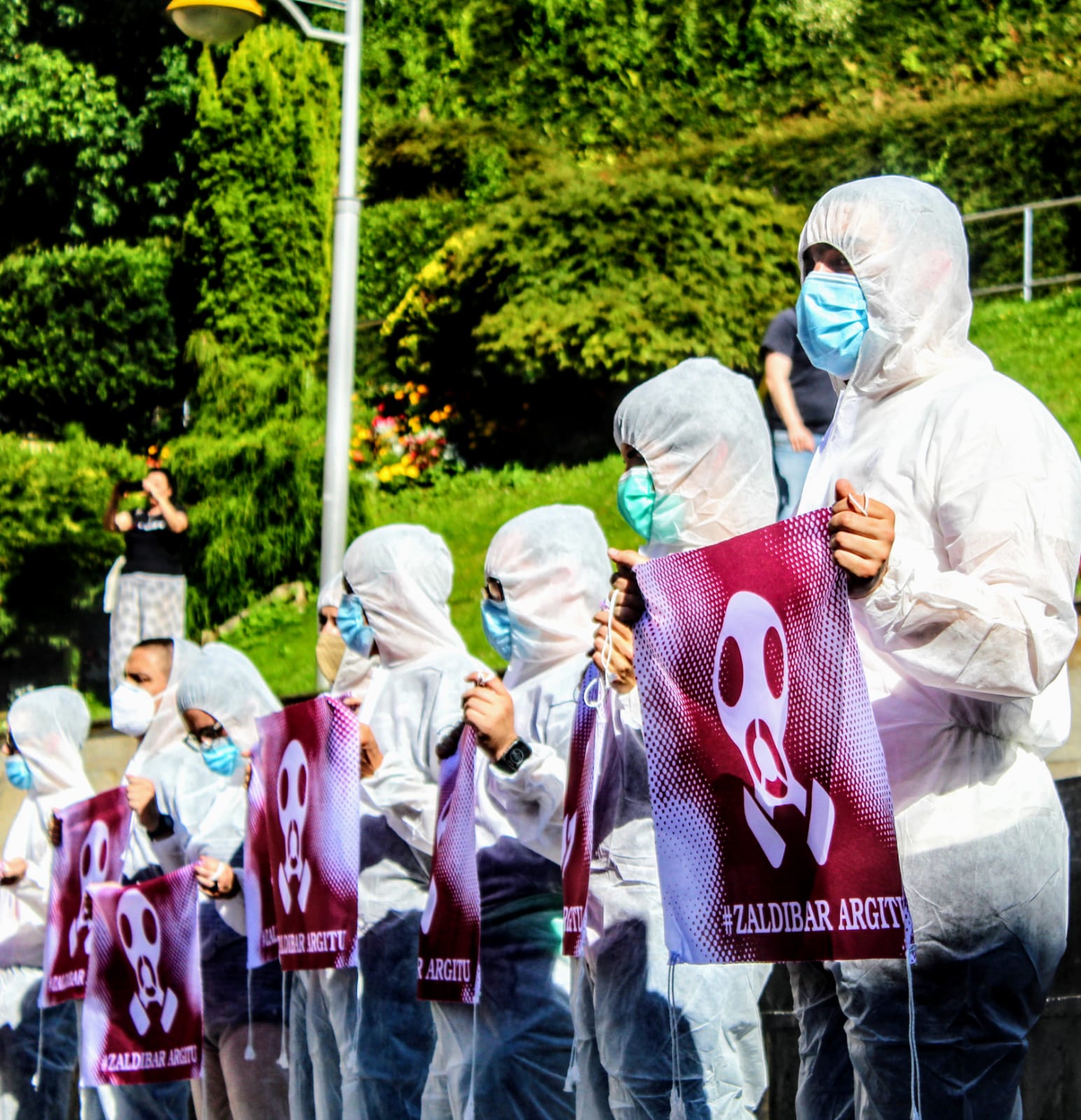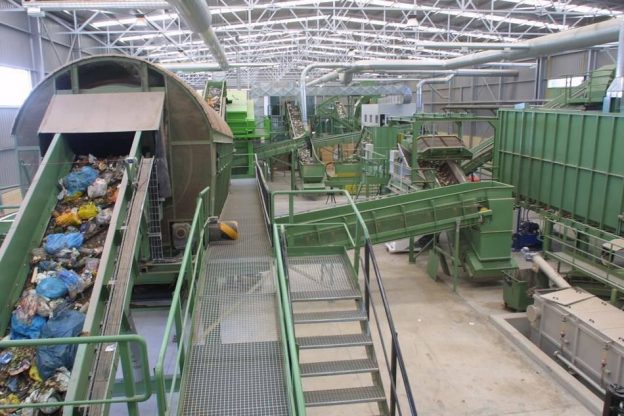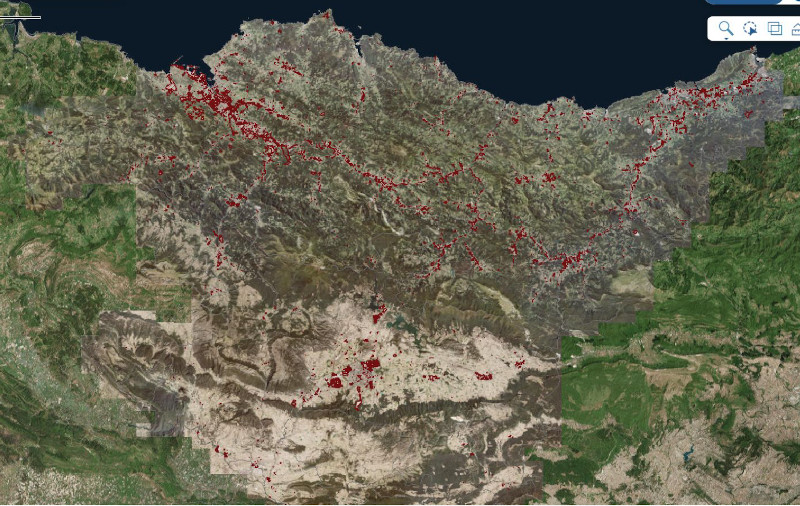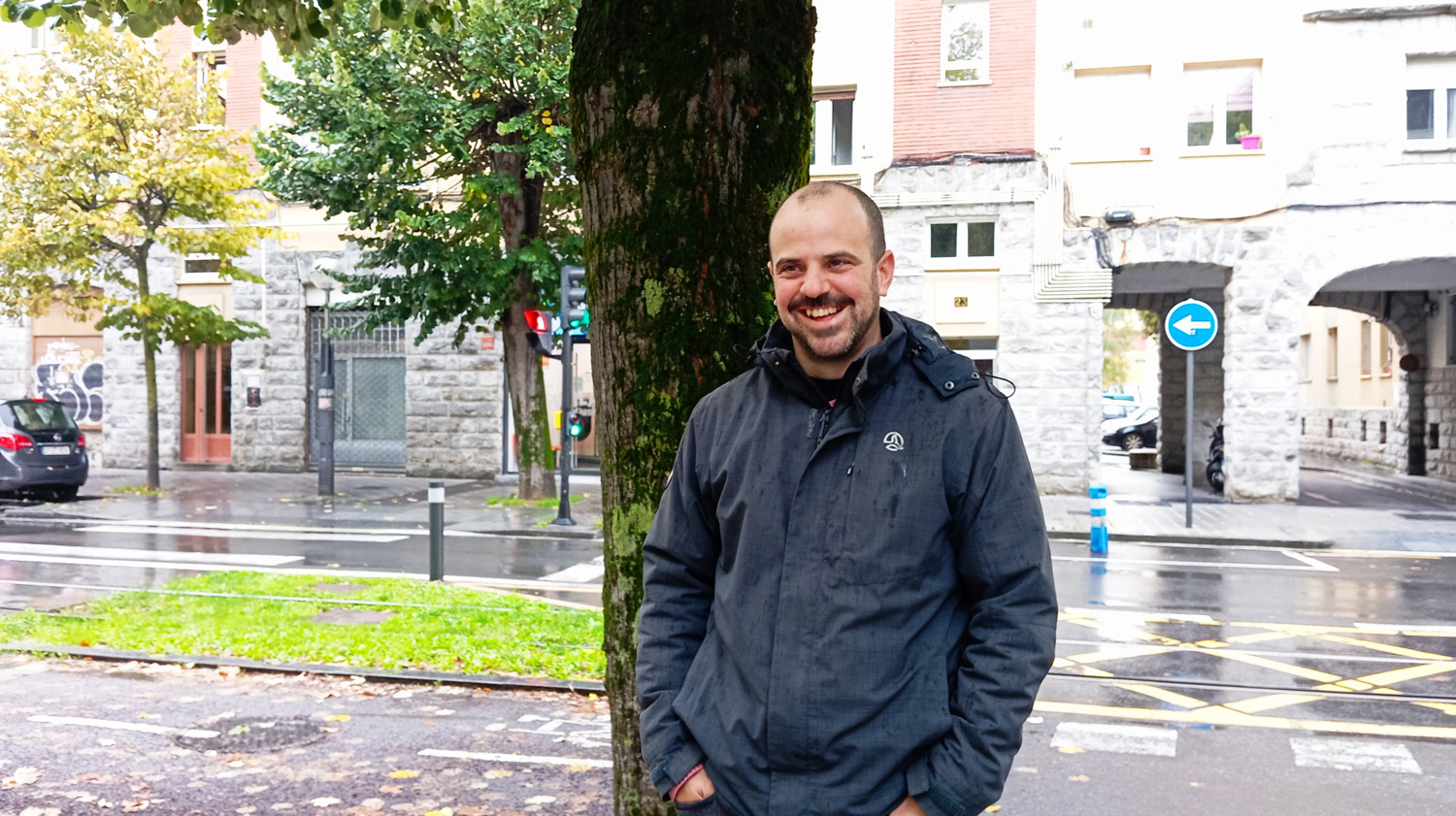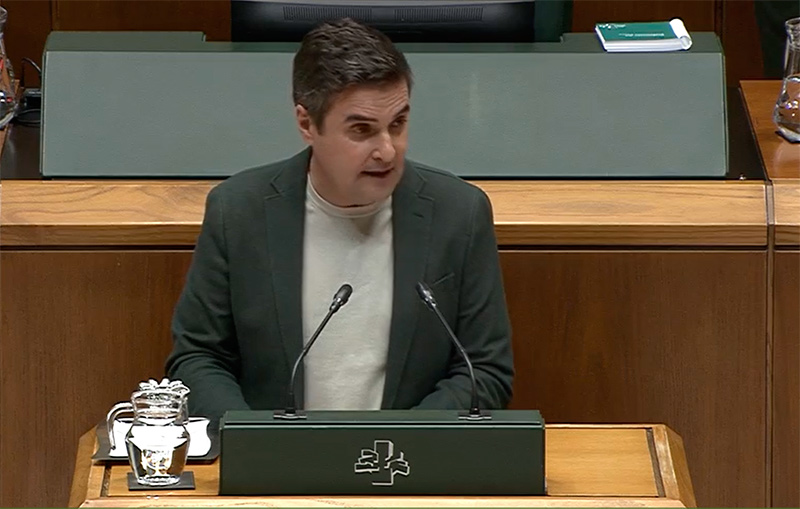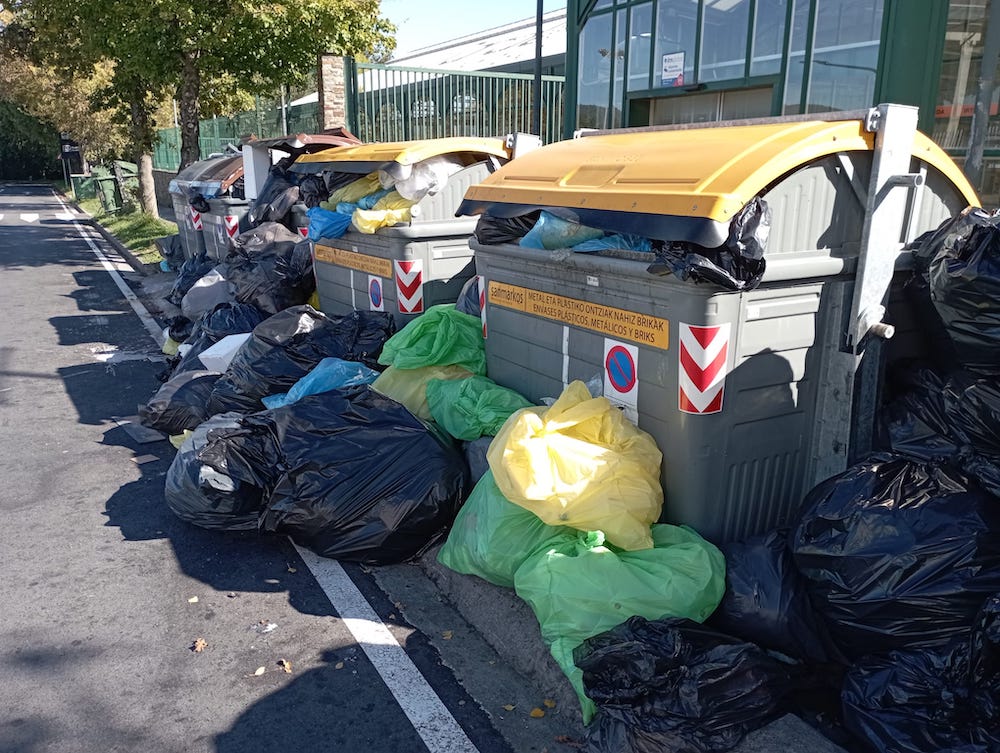San Sebastian, Capital of Incineration?
- The Provincial Council of Gipuzkoa has hastened the construction of the incineration plant in Zubieta, reactivating the project buried in the previous legislature. If a new double oven is built in Zubieta, 4.5 kilometres from Rezola, which burns industrial waste in Añorga, San Sebastián will soon have a second incinerator.
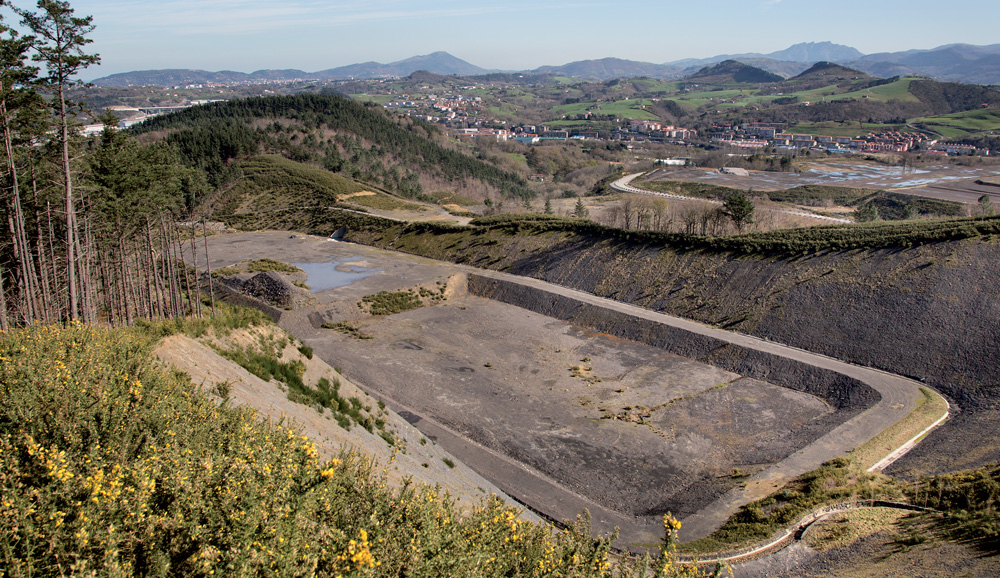
Markel Olano already announced in the 2015 election campaign the construction of the Zubieta incinerator, and the new Member, composed of PNV and PSE, has immediately started to comply with the proposal. The Environment Deputy, José Ignacio Asensio, graphically pointed out that “against time”.
Before the counterclockwork race, they've organized a Blitzkrieg, a lightning war, to build the oven that they can't do since 2002. A rapid war to reorganise waste management according to the PIGRUG 15 years ago, attacking two main fronts: on the one hand, to revive the PIGRUG, and on the other hand, to dismantle the alternative management that has spread in Gipuzkoa over the last four or five years.
A step backwards in selective collection
The non-Gipuzkoan reader might think: “The PNV and the PSE are withdrawing the Door to Door in every village they can.” It is more complex than that, but they always comply with the golden rule: to reduce at least one level of obligation – and, therefore, of results –.
In the villages where the Door to Door is in place, the mayor has sometimes re-installed free containers directly, as in Pasaia and Lazkao, without interrogation. On other occasions, a popular consultation has been organised which will allow citizens to choose between two mandatory systems, the Door to Door or the containers controlled with chips. As a summary, equivalent to the Tolosano or Mondragón.
Municipalities will have to pay the GHK an extra 44-88% per tonne of waste they deliver separately, while the last rejection, which makes treatment more expensive and creates problems, is much less expensive.
On the contrary, the mayor of the PNV of Tolosa, which from the beginning had a controlled container system, has decided to lower the level and return to the first almost uncontrolled containers. At the moment, the only case in which PNV and EHBildu have managed to reach agreement on the Door to Door mix is Lezo.
No single change has been detected in all administrations renewed in May 2015 to reduce the last rejection (which justifies landfills, TMB, incinerator and other major polluting infrastructures), but the changes always increase the possibility of adding the last garbage.
Another part of the offensive to bring down the Zero Zabor model has been taken over by the local communities and the Waste Consortium of Gipuzkoa, punishing municipalities that recycle more with new fees. For every tonne delivered separately, it will be paid 44% to 88% more this year than last year, while the final rejection, which complicates treatment and causes problems, is much less expensive. For example, Hernani will have to pay 39% more trash to the GHK with the delivery of 53 kilograms of rejection per person per year, much more than Donostia, which delivers 274 kilograms of mixed trash.
The new fees, as well as being unfair from the most basic point of view of justice, will greatly increase the cost of proper selective collection for municipalities. All over Europe, and very close to us in Catalonia, where the last rejection tends to be punished, the authorities in Gipuzkoa have decided that it will be cheaper for a city council to deliver the mixed waste than to collect it selectively and recycle it.
On the eve of the municipal elections, in the spring of 2015, 31% of the Gipuzkoan population lived selectively in municipalities that collected more than 70% of the waste, generating the majority less than 80 kilograms of rejection per person per year. In this respect, it was possible to comply with the plan presented in February 2014 by Environment Deputy Iñaki Errazkin: Reduce the last rejection in Gipuzkoa to 130,000 tonnes in 2016, for easy treatment at the CMT at the end of 2015, and store the resulting 70,000 tonnes of inert waste – which will be reduced in the coming years – at the Osinbeltz quarry in Zestoa.
Have you said “Earth of Zero Trash”?
Missing. It seems that this plan should not even be dismantled without an incinerator. Don't search anywhere Gipuzkoa, Zero Zabor territory. A little four-year hole in the history of Gipuzkoa. As if in these years the citizenship of Gipuzkoa had not seen anything new and had not proven it, the DFG has resumed the old PIGRUG that was written in the 1990s.
On December 18, Mr. Asensio presented at the General Meetings of Gipuzkoa his Strategic Management Plan 2015-2019, with the objective of responding to Gipuzkoa’s needs in this area until 2045. Inside there is an incineration plant with capacity to burn 200,000 tons per year, which expects 163,500 to be burned.
Some of the criticisms of the renewed plan have been known since 2002, because they question incineration: it harms health due to pollution, increases climate change, is the enemy of recycling, is expensive, debt citizens and administrations throughout the year, contaminating ashes will need warehouses... But in addition, two special deficiencies have been added to the current effort.
On the one hand, the increase in the population that would justify the forecast of waste. In Gipuzkoa, this prognosis expects 30,000 more inhabitants than predicted by the Gaindegia research group. The plan editor himself recognizes the key on page 100: “… it would be a desirable population forecast, taking into account in the calculations that an economic growth that supported the many immigration balances [sufficient, in a document that is no more than Spanish] that would allow pensions of the future and the welfare state ...”. As for waste planning, Xabier Garmendia has planned its own population growth in Gipuzkoa, as well as the number of immigrants that will have to be brought in to maintain the welfare state.
The new foral plan does not take into account the progress in selective collection and the cutting of the last rejection in Gipuzkoa in recent years
As if that were not enough, prognosis did not take into account the progress made in selective collection and in reducing the last rejection in Gipuzkoa during these years. Since Usurbil launched the Door to Door pick-up, it has been shown that a much smaller amount of rejection can occur in a very short time. As explained by the environmental group Eguzki, Gipuzkoa today generates 30% less waste than expected by Garmendia itself in 2002.
Therefore, any designer should anticipate scenario B of bringing the entire territory to a good selective collection based on real data in the short term. If it were extended to all Gipuzkoa (707,000 inhabitants) what the population of Mondragon generated in 2015 (106.13 kg), 75,100 tons of rejection would be generated; if the Bergara (68.6 kg) were extended, 48,500 tons would be generated; and if they were limited to the 50,85 kilos of rejection of Antzuola, 36,000 tons would be generated. Less than the ashes and slabs that the incinerator would leave after the fire of 163,000 tonnes. It is no wonder that many neighbours in the Upper Must are moved by the Plan B that they already have in place when they have been announced a new landfill.

The incinerator will heat up the legislature
The Health and Incineration Research Group (OEIT) has re-emerged with the resurrection of the Zubieta incinerator. In 2004, many health professionals signed the document denouncing incineration. It also organised an international symposium in 2006. They have now come back to the public to show that it is as bad for human health as it was 12 years ago to burn waste in the furnace.
After analyzing research studies published in recent years in scientific journals, the OEIT has ratified that incineration increases serious diseases. The most known and commented are cancers, but the variety of pollutants in continuous expansion (dioxins and furans, nitrogen oxide, heavy metals, acid aerosols, aromatic hydrocarbons…) also generates other serious diseases: hormonal, congenital malformations and anomalies… that are transmitted from generation to generation.
The doctors of the Health and Incineration Research Group have again publicly stated that the burning of waste in the furnace is as bad for human health as twelve years ago.
The contamination of the Zubieta incinerator would also be added to that of the Añorga cement plant, which burns industrial waste. San Sebastian would thus win another medal in this historic 2016: that of owning two incinerating plants in a stretch of five kilometers in its municipal area.
Since 2002, an incinerator rotates and rotates over the heads of the Guipuzkoans, now in Hondarribia, then in Zestoa… finally in Zubieta. In the 2011-15 legislature, great strides have been made in the Zero Zabor model, which has also generated admiration in Europe. At the same time, however, no major infrastructure (compost plants, CMT…) has been set up, to be built from 2002 to the present day, or due to neglect or political blockade.
In the absence of a clear debate, denounced by the doctors of the OEIT, society receives a great stir of catastrophic images and messages from the main media, as if they wanted to ignite in Gipuzkoa the situation of “Emergenza rifiuti”, which they know well in Italy and which, in the end, is fed up with the surrender of citizenship.
The incineration plant marks the 2015-2019 legislature in Gipuzkoa. The furnace provided by the incineration lobby may have the last option. It will have many citizens in front of it. The Anti-Incineration Movement, which is the name they have given to the assembly of Coordinadora, Zero Zabor and various platforms, has shown its reactivation. The mobilisation that will take place in Donostialdea on 28 February demonstrates this.
Jose Ignacio Asensio diputatuak abenduaren 18an Batzar Nagusietan hitzokin aurkeztu zuen PIGRUGeko prognosia eguneratzen aritu den profesionala: “El experto en estos temas Xabier Garmendia”.
Mikel Peruarenak “Zeinek erre nahi ditu hondakinak?” liburuan azaldu zuen nor den Bizkaiko eta Gipuzkoako errauste plantak diseinatu dituena. Ikasketaz industria ingeniari, 1987tik Eusko Legebiltzarrean Euskadiko Ezkerrako parlamentario, 1991-1995 urteetan Ingurumen sailburuorde aritu zen Ardanza lehendakariarekin. 1995ean ingurumena eta herritarren osasuna zaintzeko kargua utzirik, hondakinen kudeaketari eta errausketari lotutako negozioetan murgildu zen.
Enpresa publiko eta pribatuetan zituen edo dituen kargu ugarien zerrendatik ale batzuk hautatzen hasita, DPA Desarrollo y Protección Ambiental sortu zuen, ingurumen aholkularitza zerbitzuak eskaintzeko; 1996an Eusko Jaurlaritzak DPAri pneumatiko zaharrak kudeatzeko esperientzia pilotua baimendu zion. Handik laster sortu zuen Garmendiak Neuciclaje enpresa, autoen pneumatiko zaharrak berreskuratzeko… erregaitzat erabiliz zementu fabriketan. Neuciclajeren administrazio kontseiluan daude Cementos Lemona eta Cementos Rezola.
2002an ISR Instituto para la Sostenibilidad de los Recursos antolatu zuen Garmendiak, Espainiako Estatuan errausketaren aldeko lobby lanak egiten dituena. “ISRk gidatu du –azaldu zuen duela bost urte Peruarenak– Nafarroako hondakinen kudeaketa plana, eta Garmendiak berak antolatu ditu Bizkaiko eta Gipuzkoako planak, San Marko eta Txingudi mankomunitateen zenbait kudeaketa plan ere bai”. ISRk aurretik Club Español de Residuos izena eduki zuen, orain Fundación Economía Circular, ekonomia zirkularraren kontzeptua errausketaren lobbyak Zero Zabor mugimenduari osturik.
2009an Patxi Lopez (PSE) lehendakariarekin egin zuen berriro jauzi politikara Garmendiak, Industria sailburuorde izateko. ETAk su-eten definitiboa iragarri zuen egunean AEBetan zegoen lehendakariarekin, fracking bidezko gasaren negozioko konpainiekin harremanak estutzen. Ate errotetan itzuli berri bat eginez, 2015eko udazkenean Gipuzkoako Foru Aldunditik berriro deitu diote Xabier Garmendiari, Gipuzkoako errauste planta azkenean abian jar dezan.
Lehengai anitzekin papera egitea dute urteroko erronka Tolosako Lanbide Heziketako Ikastetxe Integratuko kimika industrialeko ikasleek: platano azalekin, orburuekin, lastoarekin, iratzearekin nahiz bakero zaharrekin egin dituzte probak azken urteotan. Aurtengoan, pilota... [+]
The City Hall of Donostia-San Sebastián announced at last Thursday’s plenary session that it will increase the waste rate by 26.5% from January 2025, claiming that Waste Law 7/2022 obliges this. Eguzki, for its part, has denounced that the law only applies in terms of costs,... [+]
August is the holiday month for many people, including those who rule. And yet it is common to take advantage of the month of August to deal with some issues without much noise, albeit of great importance.
This is what is happening with the project to centralize sludge... [+]









